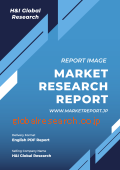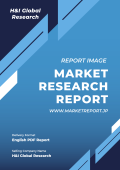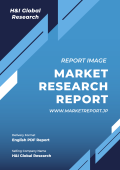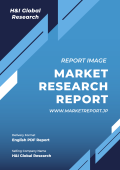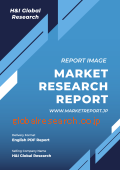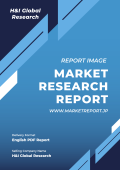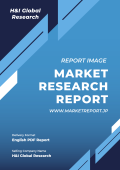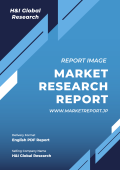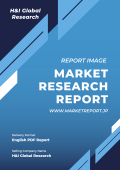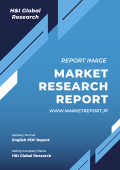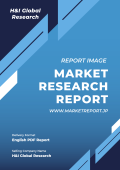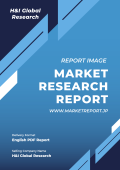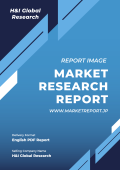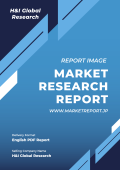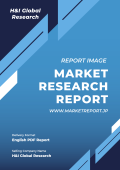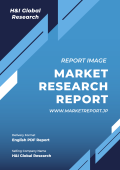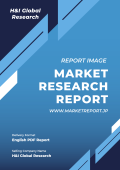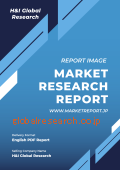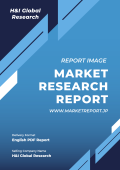| ■ 英語タイトル:Non-Ferrous Metals Market by Type (Aluminum, Copper, Lead, Tin, Nickel, Titanium, Zinc, and Others), Application (Automobile Industry, Electronic Power Industry, Construction Industry, and Others), and Region 2023-2028
|
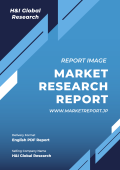 | ■ 発行会社/調査会社:IMARC
■ 商品コード:IMARC23JLY187
■ 発行日:2023年7月
■ 調査対象地域:グローバル
■ 産業分野:化学&材料
■ ページ数:148
■ レポート言語:英語
■ レポート形式:PDF
■ 納品方式:Eメール
|
■ 販売価格オプション
(消費税別)
Warning: foreach() argument must be of type array|object, null given in
/home/hni-mkt/globalresearch.co.jp/public_html/wp-content/themes/twentyfourteen/content.php on line
189
Warning: foreach() argument must be of type array|object, null given in
/home/hni-mkt/globalresearch.co.jp/public_html/wp-content/themes/twentyfourteen/content.php on line
193
Warning: foreach() argument must be of type array|object, null given in
/home/hni-mkt/globalresearch.co.jp/public_html/wp-content/themes/twentyfourteen/content.php on line
197
Warning: Undefined variable $YEN_USD in
/home/hni-mkt/globalresearch.co.jp/public_html/wp-content/themes/twentyfourteen/content.php on line
212
Warning: Undefined variable $YEN_USD in
/home/hni-mkt/globalresearch.co.jp/public_html/wp-content/themes/twentyfourteen/content.php on line
214
Warning: Undefined variable $YEN_USD in
/home/hni-mkt/globalresearch.co.jp/public_html/wp-content/themes/twentyfourteen/content.php on line
216
※販売価格オプションの説明はこちらで、ご購入に関する詳細案内はご利用ガイドでご確認いただけます。
※お支払金額は「換算金額(日本円)+消費税+配送料(Eメール納品は無料)」です。
※Eメールによる納品の場合、通常ご注文当日~2日以内に納品致します。
※レポート納品後、納品日+5日以内に請求書を発行・送付致します。(請求書発行日より2ヶ月以内の銀行振込条件、カード払いも可能)
※IMARC社の概要及び新刊レポートはこちらでご確認いただけます。
*** レポート概要(サマリー)***IMARC社は、2022年10,790億ドルであった世界の非鉄金属市場規模が、予測期間中(2023年~2028年)年平均5.1%成長し、2028年には14,590億ドルに達すると予測しています。当調査資料では、非鉄金属の世界市場を調査・分析し、序論、範囲・調査手法、エグゼクティブサマリー、イントロダクション、種類別(アルミニウム、銅、鉛、スズ、その他)分析、用途別(自動車産業、電子電力産業、建設産業、その他)分析、地域別(北米、アジア太平洋、ヨーロッパ、中南米、中東/アフリカ)分析、推進要因・阻害要因・機会、バリューチェーン分析、ファイブフォース分析、価格分析、競争状況などの項目を掲載しています。なお、当市場の主要企業には、Aditya Birla Group、Alcoa Corporation、Aluminum Corporation of China Limited、Anglo American plc、BHP、RUSAL (En+ Group MKPAO)、Glencore Plc、Norilsk Nickel、Rio Tinto Group、Sumitomo Metal Mining Co. Ltd.、Vale S.Aなどが含まれています。
・序論
・範囲・調査手法
・エグゼクティブサマリー
・イントロダクション
・世界の非鉄金属市場規模:種類別
- アルミニウムの市場規模
- 銅の市場規模
- 鉛の市場規模
- スズの市場規模
- その他種類の市場規模
・世界の非鉄金属市場規模:用途別
- 自動車産業における市場規模
- 電子電力産業における市場規模
- 建設産業における市場規模
- その他用途における市場規模
・世界の非鉄金属市場規模:地域別
- 北米の非鉄金属市場規模
- アジア太平洋の非鉄金属市場規模
- ヨーロッパの非鉄金属市場規模
- 中南米の非鉄金属市場規模
- 中東/アフリカの非鉄金属市場規模
・推進要因・阻害要因・機会
・バリューチェーン分析
・ファイブフォース分析
・価格分析
・競争状況 |
Market Overview:
The global non-ferrous metals market size reached US$ 1,079 Billion in 2022. Looking forward, IMARC Group expects the market to reach US$ 1,459 Billion by 2028, exhibiting a growth rate (CAGR) of 5.1% during 2023-2028. The rising product utilization in the automotive industry, the growing product demand in the construction industry, the recent development of advanced coatings and treatments, and the adoption of sustainable production and recycling techniques represent some of the key factors driving the market.
Non-ferrous metals refer to metallic substances that do not contain iron (Fe) as their principal component. It includes copper, zinc, lead, aluminum, tin, nickel, titanium, chromium, magnesium, silver, platinum, and gold. They are widely used in electronic devices, automobile parts, jewelry, home appliances, decorative items, aircraft, satellites, defense equipment, medical instruments, batteries, building materials, packaging, and industrial machinery. Non-ferrous metals are non-magnetic substances and offer several characteristic properties, such as high corrosion resistance, lower melting point, excellent thermal and electrical conductivities, ductility, and malleability. They are cost-effective, lightweight, readily available, and easy to recycle substances, which aids in reducing energy consumption, and minimizing adverse environmental impact. As a result, non-ferrous metals find extensive applications across the automotive, aerospace, healthcare, defense, consumer electronics, construction, and manufacturing industries.
Non-Ferrous Metals Market Trends:
The rising product utilization in the automotive industry is one of the primary factors providing an impetus to the market growth. Non-ferrous metals are widely used in various automotive parts, such as body panels, engine blocks, pistons, cylinder heads, wheels, wiring, radiator, transmission casing, steering, interior trim, suspension parts, exhaust systems, and catalytic converters. Along with this, the increasing product application in electric vehicles (EVs), such as battery packs, enclosures, charging components, chassis, heat sinks, electric motors, and cooling systems, is acting as another growth-inducing factor. Furthermore, the growing product demand in the construction industry to manufacture windows, doors, curtain wall systems, plumbing pipes and fittings, roofing and shielding components, and structural materials, such as beams and columns, is providing a thrust to the market growth. Additionally, the recent development of advanced surface coatings and treatments, such as electroplating, anodizing, and thin film deposition techniques, which improve corrosion and wear resistance, provide lustrous properties, and enhance the aesthetic appeal of non-ferrous metal products, is positively influencing the market growth. Besides this, the adoption of sustainable production and recycling techniques, which reduces waste generation, and improves metal recovery, is contributing to the market growth. Moreover, the rising product adoption in the electrical and electronics industry to produce wires, connectors, transformers, enclosures, switches, relays, and printed circuit boards (PCBs) is supporting the market growth. Other factors, including rapid industrialization activities, increasing investments in the development of advanced extraction techniques, and growing infrastructural development activities, are anticipated to drive the market growth.
Key Market Segmentation:
IMARC Group provides an analysis of the key trends in each segment of the global non-ferrous metals market, along with forecasts at the global, regional, and country levels from 2023-2028. Our report has categorized the market based on type and application.
Type Insights:
Aluminum
Copper
Lead
Tin
Nickel
Titanium
Zinc
Others
The report has provided a detailed breakup and analysis of the non-ferrous metals market based on the type. This includes aluminum, copper, lead, tin, nickel, titanium, zinc, and others. According to the report, aluminum represented the largest segment.
Application Insights:
Automobile Industry
Electronic Power Industry
Construction Industry
Others
A detailed breakup and analysis of the non-ferrous metals market based on the application has also been provided in the report. This includes automobile industry, electronic power industry, construction industry, and others. According to the report, automobile industry accounted for the largest market share.
Regional Insights:
North America
United States
Canada
Asia Pacific
China
Japan
India
South Korea
Australia
Indonesia
Others
Europe
Germany
France
United Kingdom
Italy
Spain
Russia
Others
Latin America
Brazil
Mexico
Others
Middle East and Africa
The report has also provided a comprehensive analysis of all the major regional markets, which include North America (the United States and Canada); Asia Pacific (China, Japan, India, South Korea, Australia, Indonesia, and others); Europe (Germany, France, the United Kingdom, Italy, Spain, Russia, and others); Latin America (Brazil, Mexico, and others); and the Middle East and Africa. According to the report, Asia Pacific was the largest market for non-ferrous metals. Some of the factors driving the Asia Pacific non-ferrous metals market included rapid industrialization, increasing infrastructural development activities, and significant technological advancements.
Competitive Landscape:
The report has also provided a comprehensive analysis of the competitive landscape in the global non-ferrous metals market. Detailed profiles of all major companies have been provided. Some of the companies covered include Aditya Birla Group, Alcoa Corporation, Aluminum Corporation of China Limited, Anglo American plc, BHP, RUSAL (En+ Group MKPAO), Glencore Plc, Norilsk Nickel, Rio Tinto Group, Sumitomo Metal Mining Co. Ltd., Vale S.A, etc. Kindly note that this only represents a partial list of companies, and the complete list has been provided in the report.
Key Questions Answered in This Report:
How has the global non-ferrous metals market performed so far, and how will it perform in the coming years?
What are the drivers, restraints, and opportunities in the global non-ferrous metals market?
What is the impact of each driver, restraint, and opportunity on the global non-ferrous metals market?
What are the key regional markets?
Which countries represent the most attractive non-ferrous metals market?
What is the breakup of the market based on the type?
Which is the most attractive type in the non-ferrous metals market?
What is the breakup of the market based on the application?
Which is the most attractive application in the non-ferrous metals market?
What is the competitive structure of the global non-ferrous metals market?
Who are the key players/companies in the global non-ferrous metals market?
Market Overview:
The global non-ferrous metals market size reached US$ 1,079 Billion in 2022. Looking forward, IMARC Group expects the market to reach US$ 1,459 Billion by 2028, exhibiting a growth rate (CAGR) of 5.1% during 2023-2028. The rising product utilization in the automotive industry, the growing product demand in the construction industry, the recent development of advanced coatings and treatments, and the adoption of sustainable production and recycling techniques represent some of the key factors driving the market.
Non-ferrous metals refer to metallic substances that do not contain iron (Fe) as their principal component. It includes copper, zinc, lead, aluminum, tin, nickel, titanium, chromium, magnesium, silver, platinum, and gold. They are widely used in electronic devices, automobile parts, jewelry, home appliances, decorative items, aircraft, satellites, defense equipment, medical instruments, batteries, building materials, packaging, and industrial machinery. Non-ferrous metals are non-magnetic substances and offer several characteristic properties, such as high corrosion resistance, lower melting point, excellent thermal and electrical conductivities, ductility, and malleability. They are cost-effective, lightweight, readily available, and easy to recycle substances, which aids in reducing energy consumption, and minimizing adverse environmental impact. As a result, non-ferrous metals find extensive applications across the automotive, aerospace, healthcare, defense, consumer electronics, construction, and manufacturing industries.
Non-Ferrous Metals Market Trends:
The rising product utilization in the automotive industry is one of the primary factors providing an impetus to the market growth. Non-ferrous metals are widely used in various automotive parts, such as body panels, engine blocks, pistons, cylinder heads, wheels, wiring, radiator, transmission casing, steering, interior trim, suspension parts, exhaust systems, and catalytic converters. Along with this, the increasing product application in electric vehicles (EVs), such as battery packs, enclosures, charging components, chassis, heat sinks, electric motors, and cooling systems, is acting as another growth-inducing factor. Furthermore, the growing product demand in the construction industry to manufacture windows, doors, curtain wall systems, plumbing pipes and fittings, roofing and shielding components, and structural materials, such as beams and columns, is providing a thrust to the market growth. Additionally, the recent development of advanced surface coatings and treatments, such as electroplating, anodizing, and thin film deposition techniques, which improve corrosion and wear resistance, provide lustrous properties, and enhance the aesthetic appeal of non-ferrous metal products, is positively influencing the market growth. Besides this, the adoption of sustainable production and recycling techniques, which reduces waste generation, and improves metal recovery, is contributing to the market growth. Moreover, the rising product adoption in the electrical and electronics industry to produce wires, connectors, transformers, enclosures, switches, relays, and printed circuit boards (PCBs) is supporting the market growth. Other factors, including rapid industrialization activities, increasing investments in the development of advanced extraction techniques, and growing infrastructural development activities, are anticipated to drive the market growth.
Key Market Segmentation:
IMARC Group provides an analysis of the key trends in each segment of the global non-ferrous metals market, along with forecasts at the global, regional, and country levels from 2023-2028. Our report has categorized the market based on type and application.
Type Insights:
Aluminum
Copper
Lead
Tin
Nickel
Titanium
Zinc
Others
The report has provided a detailed breakup and analysis of the non-ferrous metals market based on the type. This includes aluminum, copper, lead, tin, nickel, titanium, zinc, and others. According to the report, aluminum represented the largest segment.
Application Insights:
Automobile Industry
Electronic Power Industry
Construction Industry
Others
A detailed breakup and analysis of the non-ferrous metals market based on the application has also been provided in the report. This includes automobile industry, electronic power industry, construction industry, and others. According to the report, automobile industry accounted for the largest market share.
Regional Insights:
North America
United States
Canada
Asia Pacific
China
Japan
India
South Korea
Australia
Indonesia
Others
Europe
Germany
France
United Kingdom
Italy
Spain
Russia
Others
Latin America
Brazil
Mexico
Others
Middle East and Africa
The report has also provided a comprehensive analysis of all the major regional markets, which include North America (the United States and Canada); Asia Pacific (China, Japan, India, South Korea, Australia, Indonesia, and others); Europe (Germany, France, the United Kingdom, Italy, Spain, Russia, and others); Latin America (Brazil, Mexico, and others); and the Middle East and Africa. According to the report, Asia Pacific was the largest market for non-ferrous metals. Some of the factors driving the Asia Pacific non-ferrous metals market included rapid industrialization, increasing infrastructural development activities, and significant technological advancements.
Competitive Landscape:
The report has also provided a comprehensive analysis of the competitive landscape in the global non-ferrous metals market. Detailed profiles of all major companies have been provided. Some of the companies covered include Aditya Birla Group, Alcoa Corporation, Aluminum Corporation of China Limited, Anglo American plc, BHP, RUSAL (En+ Group MKPAO), Glencore Plc, Norilsk Nickel, Rio Tinto Group, Sumitomo Metal Mining Co. Ltd., Vale S.A, etc. Kindly note that this only represents a partial list of companies, and the complete list has been provided in the report.
Key Questions Answered in This Report:
How has the global non-ferrous metals market performed so far, and how will it perform in the coming years?
What are the drivers, restraints, and opportunities in the global non-ferrous metals market?
What is the impact of each driver, restraint, and opportunity on the global non-ferrous metals market?
What are the key regional markets?
Which countries represent the most attractive non-ferrous metals market?
What is the breakup of the market based on the type?
Which is the most attractive type in the non-ferrous metals market?
What is the breakup of the market based on the application?
Which is the most attractive application in the non-ferrous metals market?
What is the competitive structure of the global non-ferrous metals market?
Who are the key players/companies in the global non-ferrous metals market?
Figure 1: Global: Non-Ferrous Metals Market: Major Drivers and Challenges
Figure 2: Global: Non-Ferrous Metals Market: Sales Value (in Billion US$), 2017-2022
Figure 3: Global: Non-Ferrous Metals Market Forecast: Sales Value (in Billion US$), 2023-2028
Figure 4: Global: Non-Ferrous Metals Market: Breakup by Type (in %), 2022
Figure 5: Global: Non-Ferrous Metals Market: Breakup by Application (in %), 2022
Figure 6: Global: Non-Ferrous Metals Market: Breakup by Region (in %), 2022
Figure 7: Global: Non-Ferrous Metals (Aluminum) Market: Sales Value (in Million US$), 2017 & 2022
Figure 8: Global: Non-Ferrous Metals (Aluminum) Market Forecast: Sales Value (in Million US$), 2023-2028
Figure 9: Global: Non-Ferrous Metals (Copper) Market: Sales Value (in Million US$), 2017 & 2022
Figure 10: Global: Non-Ferrous Metals (Copper) Market Forecast: Sales Value (in Million US$), 2023-2028
Figure 11: Global: Non-Ferrous Metals (Lead) Market: Sales Value (in Million US$), 2017 & 2022
Figure 12: Global: Non-Ferrous Metals (Lead) Market Forecast: Sales Value (in Million US$), 2023-2028
Figure 13: Global: Non-Ferrous Metals (Tin) Market: Sales Value (in Million US$), 2017 & 2022
Figure 14: Global: Non-Ferrous Metals (Tin) Market Forecast: Sales Value (in Million US$), 2023-2028
Figure 15: Global: Non-Ferrous Metals (Nickel) Market: Sales Value (in Million US$), 2017 & 2022
Figure 16: Global: Non-Ferrous Metals (Nickel) Market Forecast: Sales Value (in Million US$), 2023-2028
Figure 17: Global: Non-Ferrous Metals (Titanium) Market: Sales Value (in Million US$), 2017 & 2022
Figure 18: Global: Non-Ferrous Metals (Titanium) Market Forecast: Sales Value (in Million US$), 2023-2028
Figure 19: Global: Non-Ferrous Metals (Zinc) Market: Sales Value (in Million US$), 2017 & 2022
Figure 20: Global: Non-Ferrous Metals (Zinc) Market Forecast: Sales Value (in Million US$), 2023-2028
Figure 21: Global: Non-Ferrous Metals (Other Types) Market: Sales Value (in Million US$), 2017 & 2022
Figure 22: Global: Non-Ferrous Metals (Other Types) Market Forecast: Sales Value (in Million US$), 2023-2028
Figure 23: Global: Non-Ferrous Metals (Automobile Industry) Market: Sales Value (in Million US$), 2017 & 2022
Figure 24: Global: Non-Ferrous Metals (Automobile Industry) Market Forecast: Sales Value (in Million US$), 2023-2028
Figure 25: Global: Non-Ferrous Metals (Electronic Power Industry) Market: Sales Value (in Million US$), 2017 & 2022
Figure 26: Global: Non-Ferrous Metals (Electronic Power Industry) Market Forecast: Sales Value (in Million US$), 2023-2028
Figure 27: Global: Non-Ferrous Metals (Construction Industry) Market: Sales Value (in Million US$), 2017 & 2022
Figure 28: Global: Non-Ferrous Metals (Construction Industry) Market Forecast: Sales Value (in Million US$), 2023-2028
Figure 29: Global: Non-Ferrous Metals (Other Applications) Market: Sales Value (in Million US$), 2017 & 2022
Figure 30: Global: Non-Ferrous Metals (Other Applications) Market Forecast: Sales Value (in Million US$), 2023-2028
Figure 31: North America: Non-Ferrous Metals Market: Sales Value (in Million US$), 2017 & 2022
Figure 32: North America: Non-Ferrous Metals Market Forecast: Sales Value (in Million US$), 2023-2028
Figure 33: United States: Non-Ferrous Metals Market: Sales Value (in Million US$), 2017 & 2022
Figure 34: United States: Non-Ferrous Metals Market Forecast: Sales Value (in Million US$), 2023-2028
Figure 35: Canada: Non-Ferrous Metals Market: Sales Value (in Million US$), 2017 & 2022
Figure 36: Canada: Non-Ferrous Metals Market Forecast: Sales Value (in Million US$), 2023-2028
Figure 37: Asia-Pacific: Non-Ferrous Metals Market: Sales Value (in Million US$), 2017 & 2022
Figure 38: Asia-Pacific: Non-Ferrous Metals Market Forecast: Sales Value (in Million US$), 2023-2028
Figure 39: China: Non-Ferrous Metals Market: Sales Value (in Million US$), 2017 & 2022
Figure 40: China: Non-Ferrous Metals Market Forecast: Sales Value (in Million US$), 2023-2028
Figure 41: Japan: Non-Ferrous Metals Market: Sales Value (in Million US$), 2017 & 2022
Figure 42: Japan: Non-Ferrous Metals Market Forecast: Sales Value (in Million US$), 2023-2028
Figure 43: India: Non-Ferrous Metals Market: Sales Value (in Million US$), 2017 & 2022
Figure 44: India: Non-Ferrous Metals Market Forecast: Sales Value (in Million US$), 2023-2028
Figure 45: South Korea: Non-Ferrous Metals Market: Sales Value (in Million US$), 2017 & 2022
Figure 46: South Korea: Non-Ferrous Metals Market Forecast: Sales Value (in Million US$), 2023-2028
Figure 47: Australia: Non-Ferrous Metals Market: Sales Value (in Million US$), 2017 & 2022
Figure 48: Australia: Non-Ferrous Metals Market Forecast: Sales Value (in Million US$), 2023-2028
Figure 49: Indonesia: Non-Ferrous Metals Market: Sales Value (in Million US$), 2017 & 2022
Figure 50: Indonesia: Non-Ferrous Metals Market Forecast: Sales Value (in Million US$), 2023-2028
Figure 51: Others: Non-Ferrous Metals Market: Sales Value (in Million US$), 2017 & 2022
Figure 52: Others: Non-Ferrous Metals Market Forecast: Sales Value (in Million US$), 2023-2028
Figure 53: Europe: Non-Ferrous Metals Market: Sales Value (in Million US$), 2017 & 2022
Figure 54: Europe: Non-Ferrous Metals Market Forecast: Sales Value (in Million US$), 2023-2028
Figure 55: Germany: Non-Ferrous Metals Market: Sales Value (in Million US$), 2017 & 2022
Figure 56: Germany: Non-Ferrous Metals Market Forecast: Sales Value (in Million US$), 2023-2028
Figure 57: France: Non-Ferrous Metals Market: Sales Value (in Million US$), 2017 & 2022
Figure 58: France: Non-Ferrous Metals Market Forecast: Sales Value (in Million US$), 2023-2028
Figure 59: United Kingdom: Non-Ferrous Metals Market: Sales Value (in Million US$), 2017 & 2022
Figure 60: United Kingdom: Non-Ferrous Metals Market Forecast: Sales Value (in Million US$), 2023-2028
Figure 61: Italy: Non-Ferrous Metals Market: Sales Value (in Million US$), 2017 & 2022
Figure 62: Italy: Non-Ferrous Metals Market Forecast: Sales Value (in Million US$), 2023-2028
Figure 63: Spain: Non-Ferrous Metals Market: Sales Value (in Million US$), 2017 & 2022
Figure 64: Spain: Non-Ferrous Metals Market Forecast: Sales Value (in Million US$), 2023-2028
Figure 65: Russia: Non-Ferrous Metals Market: Sales Value (in Million US$), 2017 & 2022
Figure 66: Russia: Non-Ferrous Metals Market Forecast: Sales Value (in Million US$), 2023-2028
Figure 67: Others: Non-Ferrous Metals Market: Sales Value (in Million US$), 2017 & 2022
Figure 68: Others: Non-Ferrous Metals Market Forecast: Sales Value (in Million US$), 2023-2028
Figure 69: Latin America: Non-Ferrous Metals Market: Sales Value (in Million US$), 2017 & 2022
Figure 70: Latin America: Non-Ferrous Metals Market Forecast: Sales Value (in Million US$), 2023-2028
Figure 71: Brazil: Non-Ferrous Metals Market: Sales Value (in Million US$), 2017 & 2022
Figure 72: Brazil: Non-Ferrous Metals Market Forecast: Sales Value (in Million US$), 2023-2028
Figure 73: Mexico: Non-Ferrous Metals Market: Sales Value (in Million US$), 2017 & 2022
Figure 74: Mexico: Non-Ferrous Metals Market Forecast: Sales Value (in Million US$), 2023-2028
Figure 75: Others: Non-Ferrous Metals Market: Sales Value (in Million US$), 2017 & 2022
Figure 76: Others: Non-Ferrous Metals Market Forecast: Sales Value (in Million US$), 2023-2028
Figure 77: Middle East and Africa: Non-Ferrous Metals Market: Sales Value (in Million US$), 2017 & 2022
Figure 78: Middle East and Africa: Non-Ferrous Metals Market: Breakup by Country (in %), 2022
Figure 79: Middle East and Africa: Non-Ferrous Metals Market Forecast: Sales Value (in Million US$), 2023-2028
Figure 80: Global: Non-Ferrous Metals Industry: Drivers, Restraints, and Opportunities
Figure 81: Global: Non-Ferrous Metals Industry: Value Chain Analysis
Figure 82: Global: Non-Ferrous Metals Industry: Porter's Five Forces Analysis
*** 免責事項 ***https://www.globalresearch.co.jp/disclaimer/
